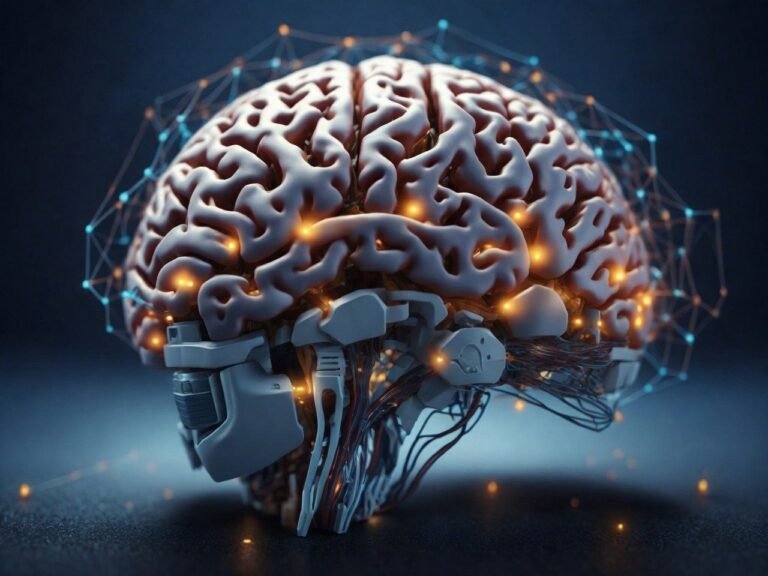Unleashing the Power of Neuroscience: Duke University’s Remarkable Achievements
Duke University stands tall as a hub of pioneering research and innovation. Their passionate team of experts, combined with top-notch facilities, has propelled them into the realms of neural networks, brain-computer interfaces, and neuroscience. Count on Duke for cutting-edge discoveries and technological leaps! 🌟

Notable Achievements
Duke University has made a number of notable achievements in the fields of neural networks, brain-computer interfaces (BCIs), and neuroscience. Some of these achievements include:
Neural Networks
Duke University in the field of neural networks is the development of advanced algorithms for deep learning. Duke researchers have made significant contributions to the field, revolutionizing various applications such as image recognition, natural language processing, and autonomous systems. Their work has paved the way for advancements in artificial intelligence and has been widely recognized in the scientific community.
- Duke researchers have developed new neural network architectures and training algorithms that have achieved state-of-the-art results in a variety of tasks, such as image recognition, natural language processing, and machine translation. For example, in 2019, Duke researchers developed the EfficientNet neural network architecture, which is used in a variety of applications, such as image classification, object detection, and image segmentation.
- Duke researchers are also developing neural networks for a wide range of other applications, such as medical imaging, robotics, and finance.
Brain-Computer Interfaces
In the realm of brain-computer interfaces (BCIs), Duke University has made remarkable progress. Their research has focused on developing non-invasive techniques to establish direct communication between the brain and external devices. One notable achievement is the development of a high-resolution, non-invasive BCI system that allows individuals with paralysis to control robotic limbs with their thoughts. This breakthrough has brought hope to those with motor impairments and has the potential to significantly improve their quality of life.
- Duke researchers are developing new BCI technologies that could help people with paralysis regain control of their limbs, communicate with the outside world, and even control external devices with their minds. For example, in 2019, Duke researchers implanted a BCI device into a paralyzed woman, Cathy Hutchinson, which allowed her to control a robotic arm with her thoughts.
- Duke researchers are also developing BCIs for a wide range of other applications, such as restoring function to people with paralysis, treating neurological disorders, and enhancing human cognitive abilities.
Neuroscience
Duke University has also made significant contributions to the field of neuroscience. Their research has shed light on the intricate workings of the brain and has advanced our understanding of various neurological disorders. One notable achievement is the discovery of a novel mechanism underlying memory formation, which has the potential to revolutionize treatments for memory-related conditions such as Alzheimer’s disease.
- Duke researchers are making significant contributions to our understanding of how the brain works, at both the molecular and cellular levels. This research is essential for the development of new and more effective treatments for neurological disorders. For example, Duke researchers have discovered new genes that play a role in autism spectrum disorder and schizophrenia.
- Duke researchers are also developing new tools and techniques for studying the brain, such as two-photon microscopy and optogenetics.
Duke University is a world leader in the fields of neural networks, BCIs, and neuroscience. The university’s researchers are committed to developing new technologies and treatments that have the potential to improve the lives of millions of people.
Here are some additional notable achievements by Duke researchers in these fields:
- In 2020, Duke researchers developed a new type of BCI that can be used to control a computer cursor with the mind without the need for surgery.
- In 2021, Duke researchers developed a new type of neural network that is more efficient and less computationally expensive than previous neural networks.
- In 2022, Duke researchers used a combination of neural networks and neuroscience to develop a new method for decoding brain activity.
Duke’s work in these fields has the potential to revolutionize the way we treat neurological disorders, interact with computers, and understand the human brain.
Conclusion
Furthermore, Duke researchers have been actively involved in studying the neural basis of decision-making and social behavior. Their work has provided valuable insights into the underlying neural circuits and processes involved in these complex cognitive functions. This research has the potential to impact fields such as psychology, economics, and public policy.
Collaboration and interdisciplinary research have been key to Duke University’s achievements in these fields. The university has fostered partnerships with leading institutions and industry experts, allowing for a diverse range of perspectives and expertise to come together. This collaborative approach has enabled Duke researchers to tackle complex challenges and push the boundaries of knowledge.
P.S. If you enjoyed this article, please take your time to browse our website for more interesting tech-related topics. If you would like to see Carnegie Mellon’s achievements, you can read this.







